Sign up for The Envelope
Get exclusive awards season news, in-depth interviews and columnist Glenn Whipp’s must-read analysis straight to your inbox.
You may occasionally receive promotional content from the Los Angeles Times.
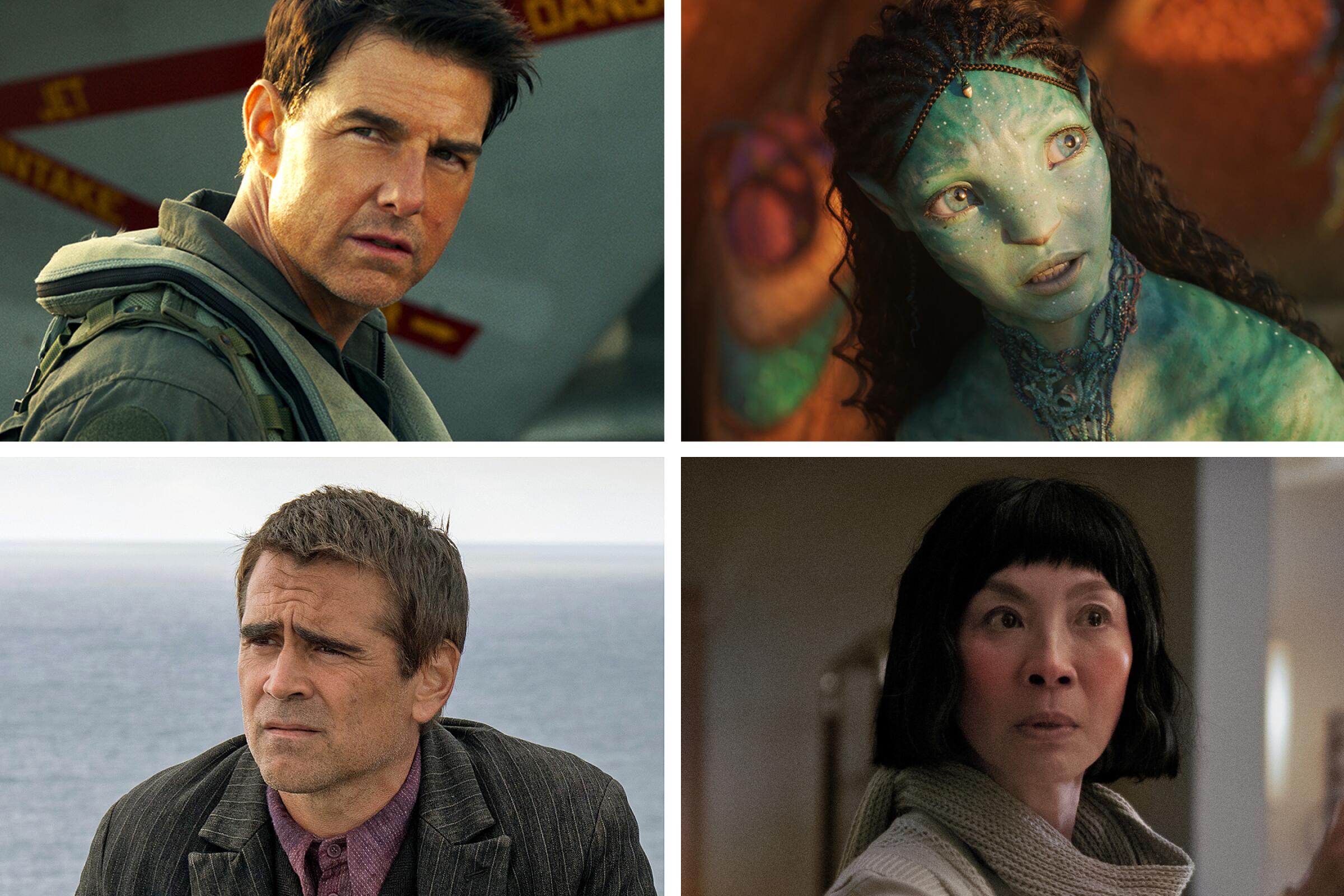
There’s a reason producers take the stage when Oscar presenters announce the best picture award. Enablers in the best sense of the word, these hardy souls clear the path for directors so they can focus on the art of the shoot. The Envelope checked in with producers of six Academy Award-contending films, who talk about the power of cinema, helping their directors and the decisive moment when they knew their film was going to work.
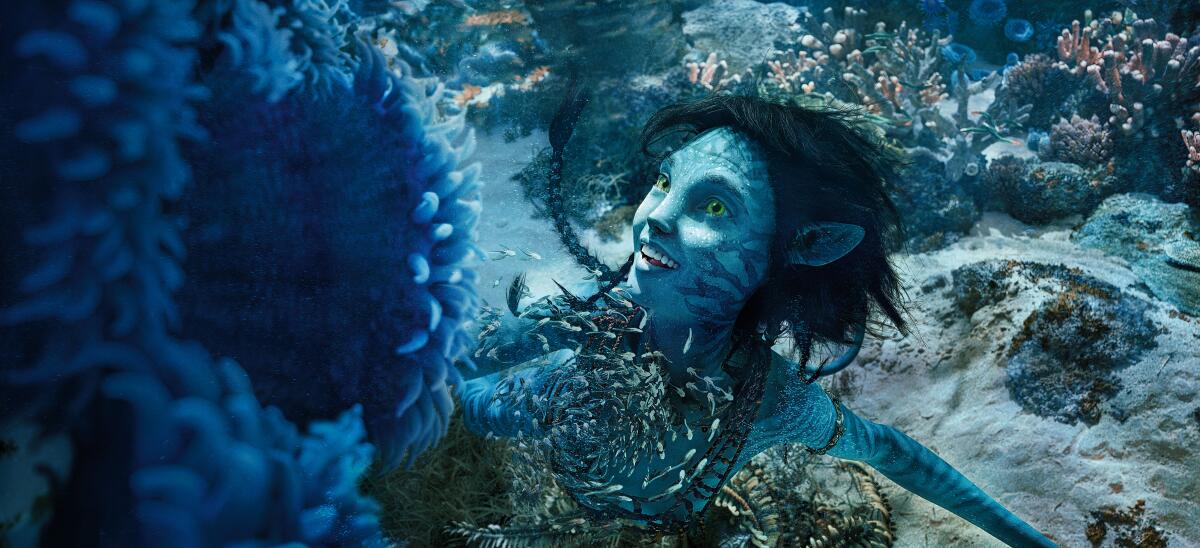
“Avatar: The Way of Water”
Director/co-writer James Cameron
Why now? Look at our world! People need the escape. I got an incredible note forwarded to me from the Disney sub-distributor in Ukraine, if I can find the email. “In between the power outages and the air raids, people are waiting at the cinema when the doors open to see ‘Avatar: The Way of Water.’” It’s great to hear that your movie’s reaching people in a war-torn country.
Decisive moment: When we got our first shots from Weta [FX] of what I call “the First Swim,” where the kids jump in the water, you don’t want to leave, and not just because of the world. It’s the performances. Sigourney Weaver as Kiri, looking with wonder — when she stays down [underwater], I want to stay down too because she represents me in that moment.
Auteur chemistry: No question Jim’s the auteur and has the final say, but there’s so much going on in these movies, I try to take stuff off of his shoulders, move it further down the road and give it back to him. If I can do seven hours a day with Weta effects so Jim only has to spend an hour? Boy, I’ve accomplished something.

“The Banshees of Inisherin”
Writer-director Martin McDonagh
Why now? Martin brings enormous humanity to his wit and observations of extraordinary, absurd situations. It’s a very rich mix, and in this film, Colin [Farrell] managed to play funny and beautiful and sad in a very precise way. I’ve gotten emails from people who say they came out of the cinema and had to go sit alone for 10 minutes just because they’ve been so deeply moved.
Decisive moment: It’s the confrontation scene where Brendan’s dog runs up to Colin and starts licking him. Colin says, “I didn’t come here for the licks.” I remember standing at one of the monitors up the hill a little bit. I turned to Martin and said, “It’s beautiful and very funny.” And he’s like, “Well I hope so.”
Auteur chemistry: Your aim is to be invisible and make sure that nothing interrupts Martin’s process. He rehearses his actors for three weeks. Agents say, “No, that’s ridiculous,” and you say, “No, no, you are going to do that.”

“Elvis”
Director Baz Luhrmann
Origin story: I’d gotten the rights from a company called Core Media, which owned the Elvis estate at the time. I called the president and said, “I have an idea: Baz Luhrmann, Elvis. Give me a chance to run with it and I’ll give Baz’s agent a call.” Which I did, that same afternoon. Baz was in post on “The Great Gatsby,” but eventually I met with him in New York.
Why now? Because we had to wait for Austin Butler to grow up and be the right age to get this part. I think that’s as good an answer as any.
The pandemic: After our initial table read in Australia in January 2020, I went home and Tom Hanks came back to the States, with the intent that everybody would go back to Australia and start shooting in February. That’s when Tom and [his wife], Rita [Wilson], got the coronavirus. It was a crushing blow, having come so far and not knowing if we’d ever come back again.
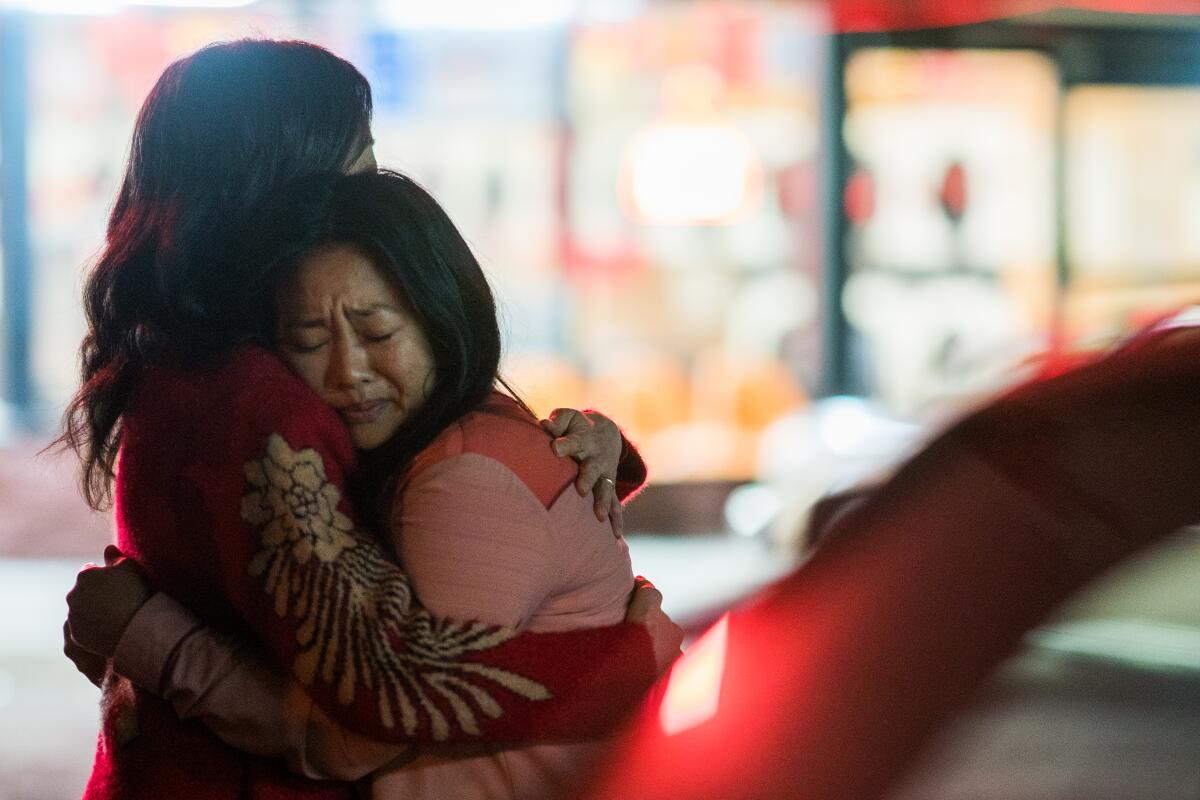
“Everything Everywhere All at Once”
Writer-directors Dan Kwan and Daniel Scheinert
Why now? Coming out of this harrowing time, people had time to reflect on their parents and look at all these versions of themselves. I think that made this idea of a psychological multiverse really powerful.
Location: Founders Bank in Simi Valley collapsed during the 2008 financial crisis, and we turned the building into our mini-studio lot. We shot the big fanny pack fight sequence in the atrium and built the Wong family apartment in the cafeteria. We were a $14-million indie movie that stretched the dollar very far.
Decisive moment: The cathartic parking lot scene between Michelle Yeoh and Stephanie Hsu. It was a night shoot and I was in this little tent sobbing so hard because the whole time I had been thinking, “Yes the movie’s going to be fun, yes people will love to see Michelle and Jamie this way, but are we going to stick the landing?” I just wasn’t sure. Watching Michelle on the monitor, I came completely undone, and that’s when I knew this movie was going to be special.
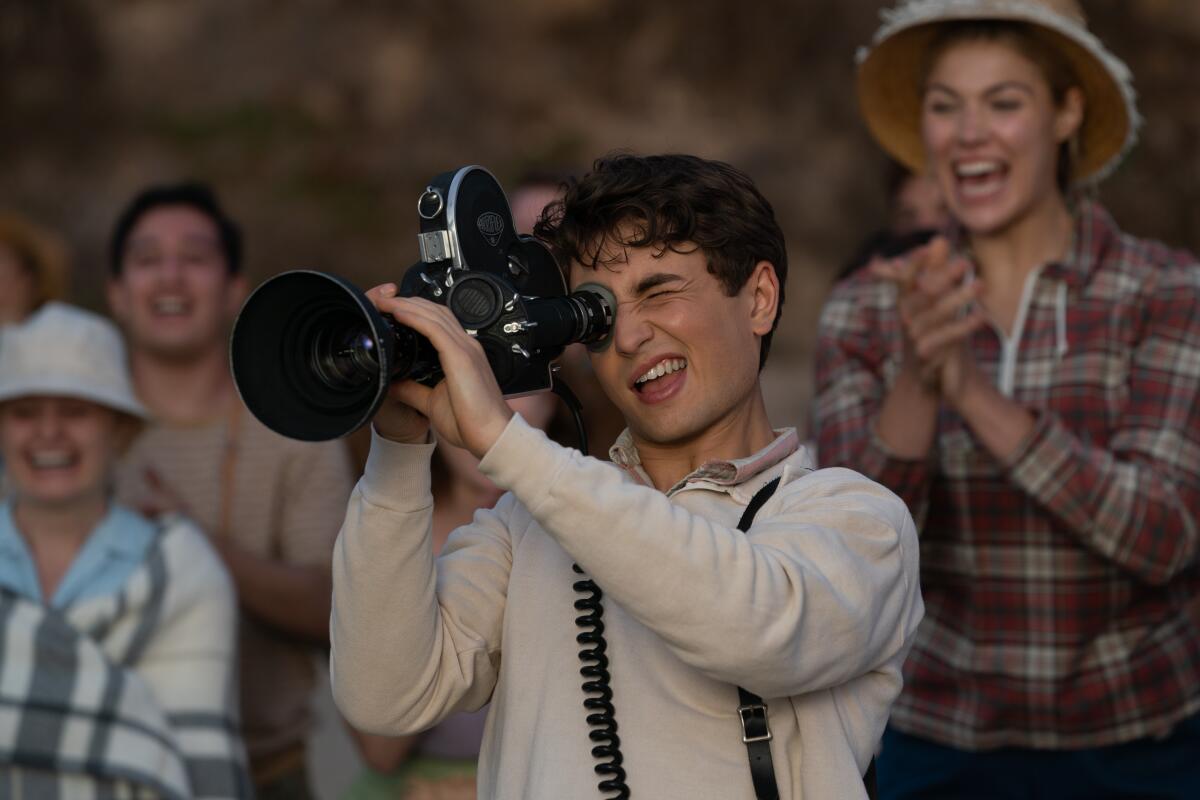
“The Fabelmans”
Director/co-writer Steven Spielberg
Why now? In the very early days of the pandemic, people were dying. I think that made Steven go, “Hmmm: What is the one story that I need to tell?” And it was about what happened early in his life when he discovered his love for filmmaking at the same time that his family was falling apart.
Casting: We knew Sammy Fabelman [Spielberg’s teen self] was going to be tough. Cindy Tolan, who cast “West Side Story,” went through about 2,000 people. She showed us dozens and dozens. Gabe [LaBelle] was [self-] possessed in a way that we found interesting. And we did it all on Zoom! He’s from Vancouver and we didn’t meet Gabe in person until the day we started shooting.
Auteur chemistry: Steven calls me and says, “We’re gonna make a movie.” I say, “OK, let’s figure out how.” I talk to all the agents, talk to the crew and get everybody lined up so that when Steven arrives on set, it’s like a playground where he can work with his actors and know that we’re going to make our day, on schedule, on budget.
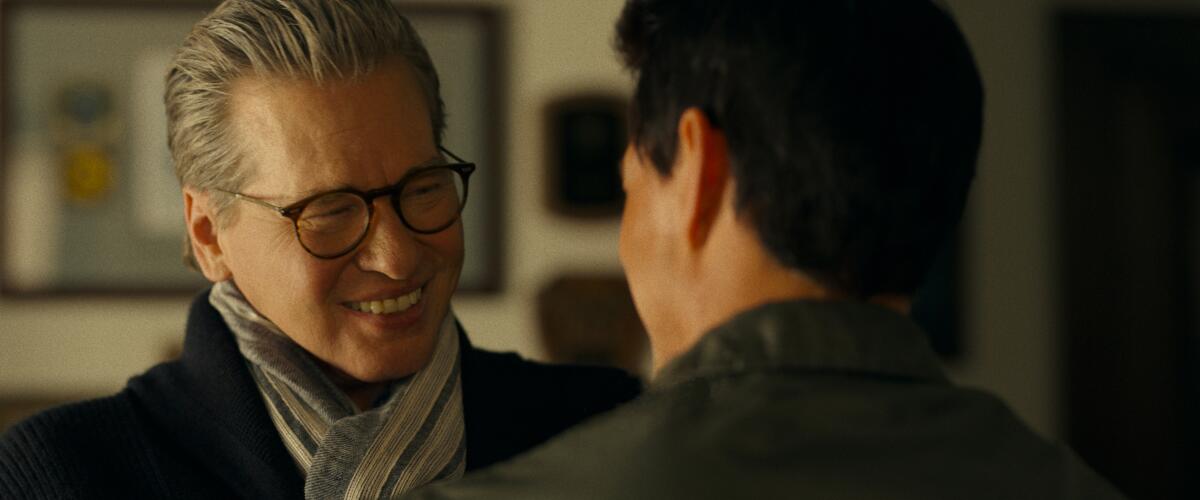
“Top Gun: Maverick”
Director Joseph Kosinski and producer-star Tom Cruise
Origin story: In 2017, Joe Kosinski and I went to Paris and pitched Tom while he was making “Mission Impossible.” He liked the concept of following his character’s journey after all these years. He looked us in the eye and said, “If we’re going to do this movie, we’re going to do it for real.”
Why now? Tom was 100% [insistent] that “Top Gun: Maverick” had to open in theaters, so we put off the release date three times until audiences started drifting back. It brought in people who hadn’t seen a movie in two years and just hit the zeitgeist.
Casting coup: Val Kilmer. Tom said he wouldn’t make the movie without him. The idea for Val’s Iceman character and where he was in his life — that all came from Val. We were very fortunate.
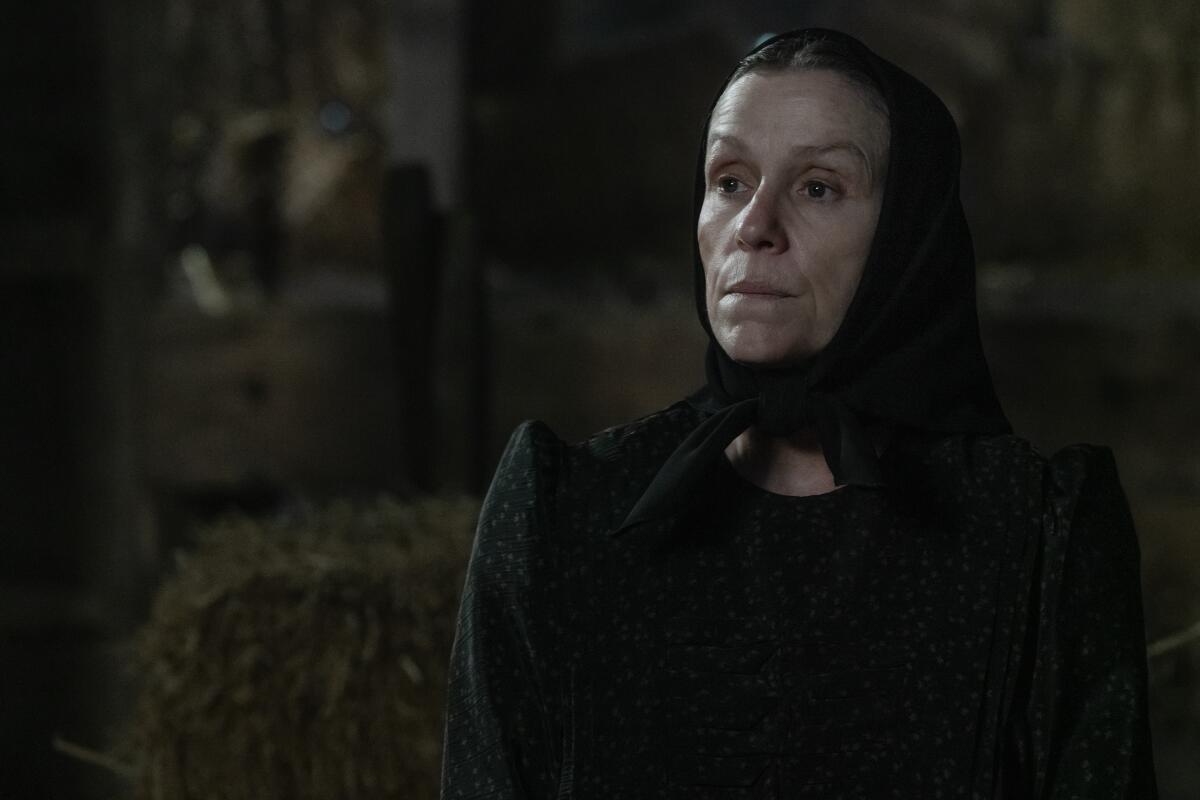
“Women Talking”
Writer-director Sarah Polley and producer-actor Frances McDormand
Origin story: Frances read the book and thought it could be something, so she came to see me and off we went. It was a spectacular read and very cinematic. Sarah Polley was our first choice to direct. I found her [2012 documentary] “Stories We Tell” to be one of the most imaginative films I’d ever seen.
Pandemic headaches: We were always going to shoot this film in Canada because Sarah has three small children and it was necessary to be in her hometown, but they had a terrible spike of coronavirus there in late spring of 2021, which made Sarah very nervous. The first week of rehearsal happened on Zoom while everyone was [confined] in their respective quarantines in Toronto. It was crazy.
Auteur chemistry: Working with Sarah and Frances, I don’t know that I did anything more or less than the other two, but what the three of us did do is, we talked a lot and we listened a lot. It’s one of the great partnerships of my career.
Sign up for The Envelope
Get exclusive awards season news, in-depth interviews and columnist Glenn Whipp’s must-read analysis straight to your inbox.
You may occasionally receive promotional content from the Los Angeles Times.